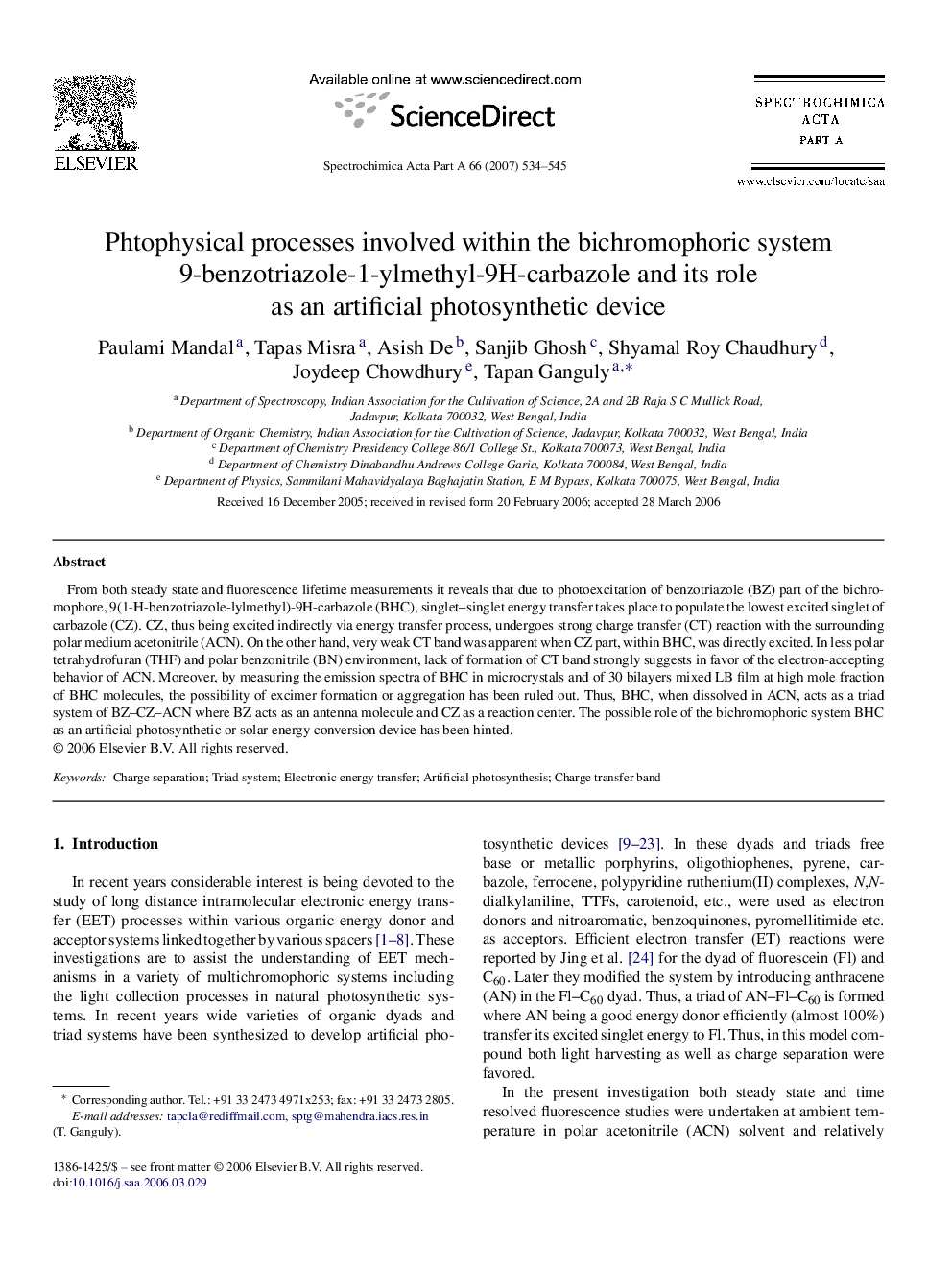| Article ID | Journal | Published Year | Pages | File Type |
|---|---|---|---|---|
| 1235763 | Spectrochimica Acta Part A: Molecular and Biomolecular Spectroscopy | 2007 | 12 Pages |
Abstract
From both steady state and fluorescence lifetime measurements it reveals that due to photoexcitation of benzotriazole (BZ) part of the bichromophore, 9(1-H-benzotriazole-lylmethyl)-9H-carbazole (BHC), singlet-singlet energy transfer takes place to populate the lowest excited singlet of carbazole (CZ). CZ, thus being excited indirectly via energy transfer process, undergoes strong charge transfer (CT) reaction with the surrounding polar medium acetonitrile (ACN). On the other hand, very weak CT band was apparent when CZ part, within BHC, was directly excited. In less polar tetrahydrofuran (THF) and polar benzonitrile (BN) environment, lack of formation of CT band strongly suggests in favor of the electron-accepting behavior of ACN. Moreover, by measuring the emission spectra of BHC in microcrystals and of 30 bilayers mixed LB film at high mole fraction of BHC molecules, the possibility of excimer formation or aggregation has been ruled out. Thus, BHC, when dissolved in ACN, acts as a triad system of BZ-CZ-ACN where BZ acts as an antenna molecule and CZ as a reaction center. The possible role of the bichromophoric system BHC as an artificial photosynthetic or solar energy conversion device has been hinted.
Related Topics
Physical Sciences and Engineering
Chemistry
Analytical Chemistry
Authors
Paulami Mandal, Tapas Misra, Asish De, Sanjib Ghosh, Shyamal Roy Chaudhury, Joydeep Chowdhury, Tapan Ganguly,
